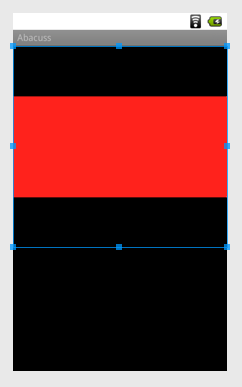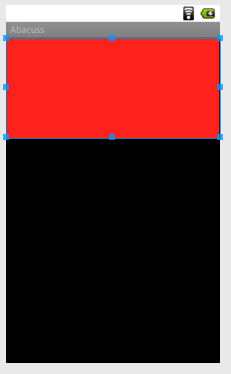Posted on 23 Aug 2012
I am writing a sample hypermedia API in Rails, here, and recently came across some trouble trying to get Rails to recognize “application/hal+json” as a JSON format.
I ended up having to override respond_with to make it understand the HAL format. Not exactly what I hoped for, but it works.
config/initializers/mime_types.rb
Mime::Type.register "application/hal+json", :hal
ActionDispatch::ParamsParser::DEFAULT_PARSERS[Mime::Type.lookup('application/hal+json')] =
lambda do |body|
JSON.parse(body)
end
app/controllers/application_controller.rb<
class ApplicationController < ActionController::Base
...
private
def respond_with(resource, options = {})
super(resource, options) do |format|
format.hal do
render options.merge(:json => resource)
end
end
end
end
app/controllers/home_controller.rb
HomeController < ApplicationController
respond_to :hal
...
end
This method doesn’t give the benefit of auto status codes based on the HTTP verb. I did however get a monkey patch to work:
config/initializers/monkey_patching.rb
module ActionController
class Responder
def to_hal
@format = :json
api_behavior(nil)
end
end
end
The overload of respond_with is now no longer necessary, but we’re accessing a protected method.
Resources:
- http://stackoverflow.com/questions/8700332/rails-3-and-json-default-renderer-but-custom-mime-type
- http://http://api.rubyonrails.org/classes/Mime/Type.html
- https://github.com/oestrich/hypermedia_rails/commit/1fc2d721aa80c384867d7d374baf3eada6e166e6
- http://api.rubyonrails.org/classes/ActionController/Responder.html
Posted on 20 Aug 2012
This post was originally published on the
SmartLogic Blog.
You may have docs for your API, but do you have an API for your docs? With RspecApiDocumentation and Raddocs, you can cURL for your documentation. Try out the following cURL command to see for yourself:
$ curl -H "Accept: text/docs+plain" http://rad-example.herokuapp.com/orders

- Install the gem
- Configure
- Write tests
- Host via public or Raddocs
Also available as a presentation.
What is the rspec_api_documentation gem?
The rspec_api_documentation gem (RAD for short) is a gem that lets you easily create documentation for your API based on tests for the API. You write acceptance tests and it will output docs.
Assumptions
- rspec is installed and setup
Installing the gem
Installing RAD is as simple as adding it to your Gemfile. You might want to add it to a test and development group because it has a handy rake task for generating docs.
Gemfile
gem "rspec_api_documentation"
Install gem
Once RAD is installed there are several options you probably want to configure. Listed below are all of the default options that RAD ships with. The most common ones you will want to change are “api_name”, “docs_dir”, “format”, and “url_prefix”.
spec/spec_helper.rb
RspecApiDocumentation.configure do |config|
# All settings shown are the default values
config.app = Rails.application # if it’s a rails app
config.api_name = “API Documentation”
config.docs_dir = Rails.root.join(“docs”)
config.format = :html # also: :json, :wurl, :combined_text, :combined_json
config.url_prefix = “”
# If you want cURL commands to be included in your docs,
# set to not nil
config.curl_host = nil # “http://myapp.example.com”
# Filtering
# If you set the :document key on an example to a particular group
# you can only output those examples
config.filter = :all
# You can also exclude by keys
config.exclusion_filter = nil
# To use your own templates
config.template_path = “” # The default template path is inside of RAD
# Instead of sorting alphabetically, keep the order in the spec file
config.keep_source_order = false
config.define_group :public do |config|
# When you define a sub group these defaults are set
# Along with all of the parents settings
config.docs_dir = Rails.root.join(“docs”, “public”)
config.filter = :public
config.url_prefix = “/public”
end
end
Write tests
Tests for RAD are written in a DSL which helps assist in getting the metadata correct for properly formatting the outputted docs. Tests go in spec/acceptance.
spec/acceptance/orders_spec.rb
require 'acceptance_helper'
resource "Orders" do
header "Accept", "application/json"
header "Content-Type", "application/json"
let(:order) { Order.create(:name => "Old Name", :paid => true, :email => "email@example.com") }
get "/orders" do
parameter :page, "Current page of orders"
let(:page) { 1 }
before do
2.times do |i|
Order.create(:name => "Order #{i}", :email => "email#{i}@example.com", :paid => true)
end
end
example_request "Getting a list of orders" do
expect(response_body).to eq(Order.all.to_json)
expect(status).to eq(200)
end
end
head "/orders" do
example_request "Getting the headers" do
expect(response_headers["Cache-Control"]).to eq("no-cache")
end
end
post "/orders" do
parameter :name, "Name of order", :required => true, :scope => :order
parameter :paid, "If the order has been paid for", :required => true, :scope => :order
parameter :email, "Email of user that placed the order", :scope => :order
response_field :name, "Name of order", :scope => :order, "Type" => "String"
response_field :paid, "If the order has been paid for", :scope => :order, "Type" => "Boolean"
response_field :email, "Email of user that placed the order", :scope => :order, "Type" => "String"
let(:name) { "Order 1" }
let(:paid) { true }
let(:email) { "email@example.com" }
let(:raw_post) { params.to_json }
example_request "Creating an order" do
explanation "First, create an order, then make a later request to get it back"
order = JSON.parse(response_body)
expect(order.except("id", "created_at", "updated_at")).to eq({
"name" => name,
"paid" => paid,
"email" => email,
})
expect(status).to eq(201)
client.get(URI.parse(response_headers["location"]).path, {}, headers)
expect(status).to eq(200)
end
end
get "/orders/:id" do
let(:id) { order.id }
example_request "Getting a specific order" do
expect(response_body).to eq(order.to_json)
expect(status).to eq(200)
end
end
put "/orders/:id" do
parameter :name, "Name of order", :scope => :order
parameter :paid, "If the order has been paid for", :scope => :order
parameter :email, "Email of user that placed the order", :scope => :order
let(:id) { order.id }
let(:name) { "Updated Name" }
let(:raw_post) { params.to_json }
example_request "Updating an order" do
expect(status).to eq(204)
end
end
delete "/orders/:id" do
let(:id) { order.id }
example_request "Deleting an order" do
expect(status).to eq(204)
end
end
end
DSL Methods of Interest
See https://github.com/zipmark/rspec_api_documentation/wiki/DSL
Host via public or Raddocs
Public
This is the easiest method. If you generate HTML or wURL HTML output then you can simply place the generated docs inside of the publicly accessible folder in your application when you deploy.
Raddocs
Raddocs is a simple Sinatra app that will take the JSON output from RAD and serve it up as HTML pages. The output is very similar to the HTML generated pages, but Raddocs allows us to have better asset handling than straight HTML.
- Generate :json and :combined_text output from RAD
- Configure Raddocs
- Mount Raddocs
spec/spec_helper.rb
RspecApiDocumentation.configure do |config|
config.formats = [:json, :combined_text]
end
config/initializers/raddocs.rb
Raddocs.configure do |config|
# output dir from RAD
config.docs_dir = "docs"
# Should be in the form of text/vnd.com.example.docs+plain
config.docs_mime_type = /text\/docs\+plain/
end
config/routes.rb
match "/docs" => Raddocs::App, :anchor => false
For middleware
config/application.rb
config.middleware.use "Raddocs::Middleware"
Conclusion
You now have docs that won’t generate if your tests fail, making sure that they are correct. And you can view them in a console as well as the browser.
Image Source
Posted on 19 Nov 2011
Android’s ImageView does a strange thing when you have it stretch to fit the width of the view but not the height. It creates a big square for the view instead of conforming to the image size.
This:
<?xml version="1.0" encoding="utf-8"?>
<RelativeLayout xmlns:android="http://schemas.android.com/apk/res/android"
android:layout_width="match_parent"
android:layout_height="match_parent" >
<ImageView
android:layout_width="fill_parent"
android:layout_height="wrap_content"
android:src="@drawable/red" />
</RelativeLayout>
Gives you:

In order to fix this you can set the property “android:adjustViewBounds” to true, and the view will conform to the size of the image.
This:
<?xml version="1.0" encoding="utf-8"?>
<RelativeLayout xmlns:android="http://schemas.android.com/apk/res/android"
android:layout_width="match_parent"
android:layout_height="match_parent" >
<ImageView
android:layout_width="fill_parent"
android:layout_height="wrap_content"
android:src="@drawable/red"
android:adjustViewBounds="true"/>
</RelativeLayout>
Gives you:

Much better.
Found from: http://stackoverflow.com/questions/5355130/android-imageview-size-not-scaling-with-source-image
Posted on 07 Oct 2011
I started using the devise authentication token for a project recently and was confounded on how to get the token from the client’s perspective. After fiddling with different ways, I finally found that adding :authentication_token to attr_accessible let’s it slide through the post to sign_in.
class User
attr_accessible :authentication_token
end
curl -d "user[email]=eric@example.com&user[password]=password"
http://example.com/users/sign_in.json
{"authentication_token":"RxYA7tzybe8E3H4q1zvb",
"email":"eric@example.com"}
Posted on 23 Aug 2011
Today I set up my first real rails production server and in the process ran across an issue with cron and rvm. I have a rake task that I want to run every 15 minutes. I made a script that cd’d into the directory, loaded the correct ruby and gemset then did the rake task.
Every time cron ran though, it kept giving me the following error:
rvm: command not found
rake: command not found
After some quick googling I came across two posts that let me do the rake task:
Sourcing the rvm script was the part I was missing.
This was the final script I came up with:
#!/bin/bash
source ~/.rvm/scripts/rvm
cd /home/deploy/apps/my_app
rvm use 1.9.2@my_app
RAILS_ENV=production rake email:reminder



